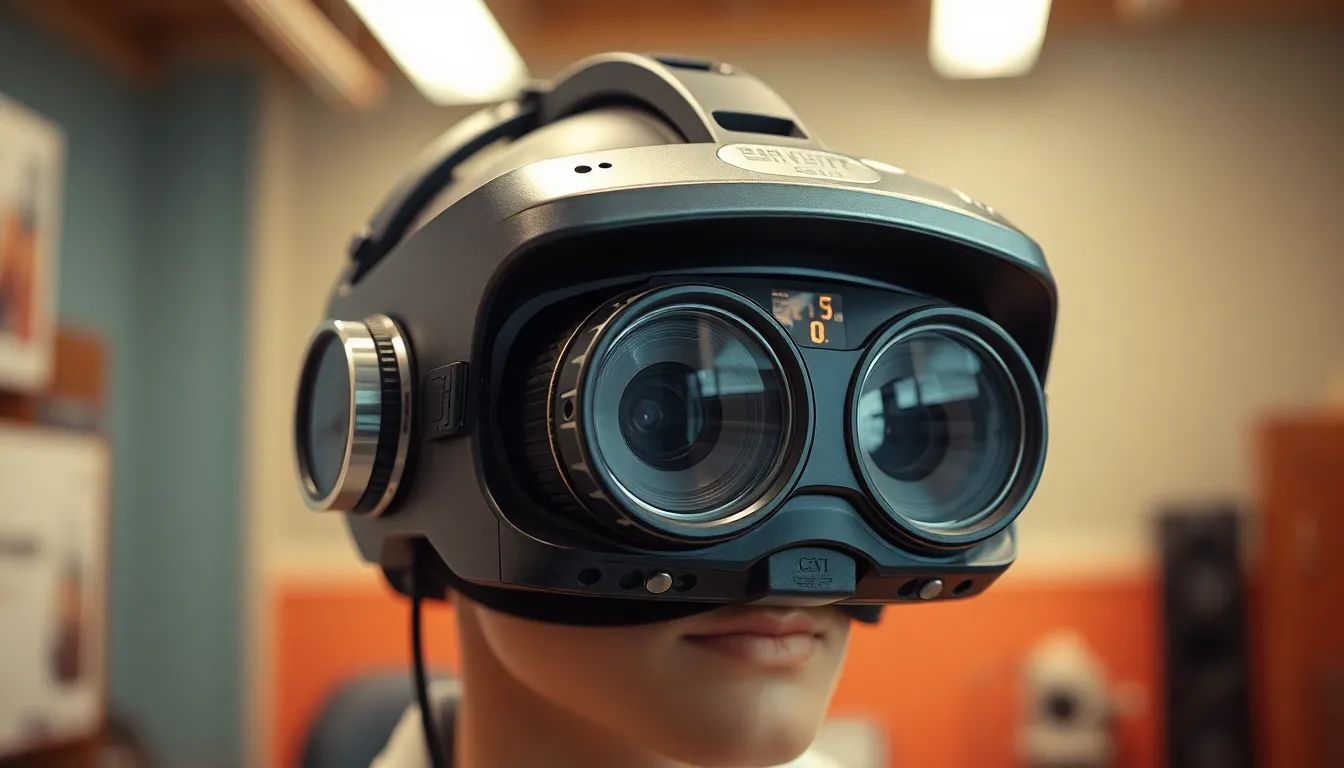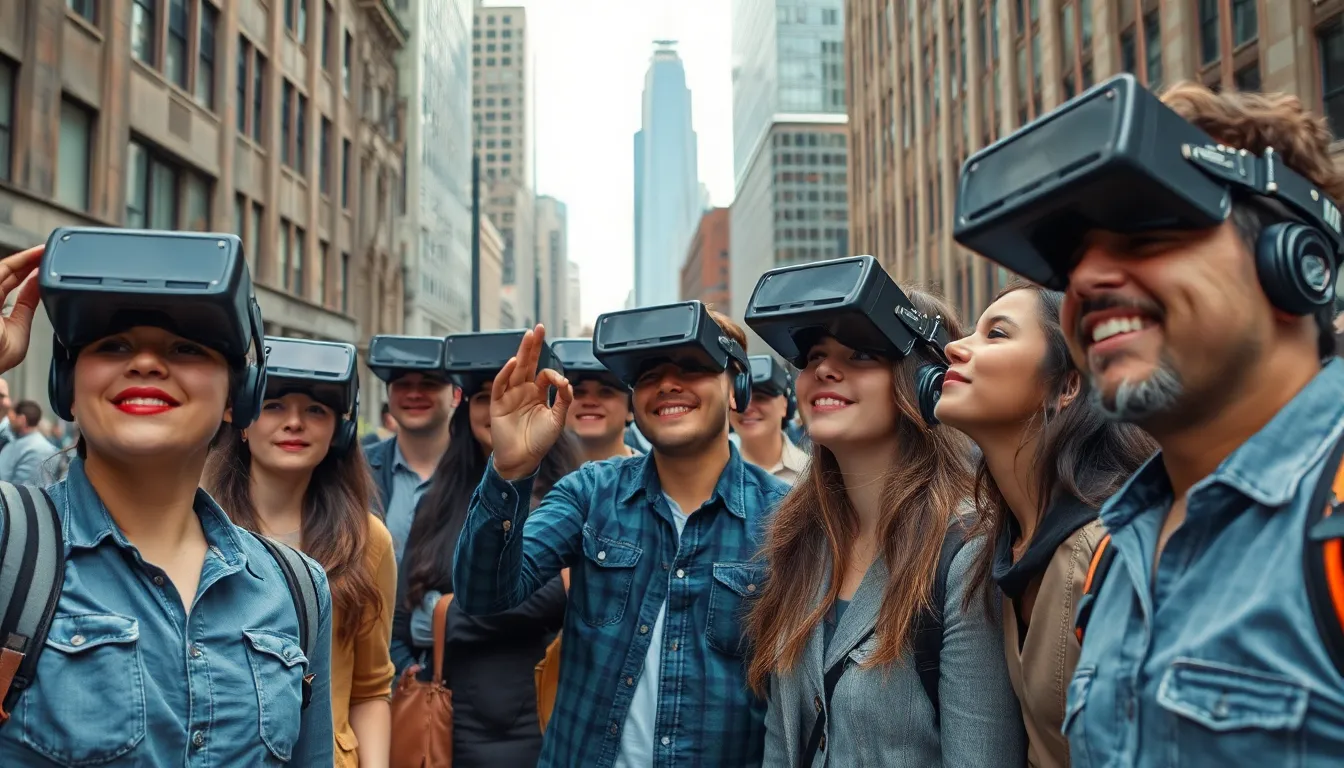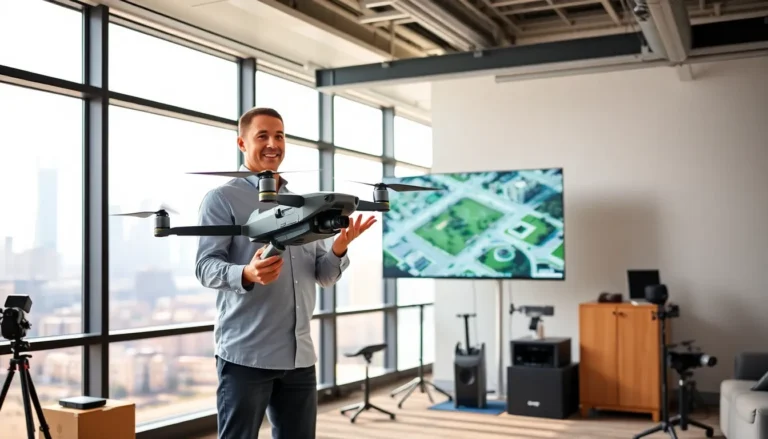Augmented reality isn’t just a buzzword thrown around by tech enthusiasts; it’s a fascinating journey through time that’s reshaped how we interact with the world. Imagine a world where digital elements blend seamlessly with reality—like a magic trick that never gets old. From its humble beginnings to the cutting-edge applications of today, augmented reality has come a long way, and it’s about to get even more exciting.
Table of Contents
ToggleOverview of Augmented Reality
Augmented reality (AR) overlays digital information on the physical world, blending virtual elements with real-life contexts. The journey of AR began in the 1960s with Ivan Sutherland’s “Sword of Damocles,” considered the first head-mounted display that projected simple graphics. Researchers continued to explore AR concepts throughout the 1980s, but advancements gained momentum in the 1990s with the invention of the term “augmented reality” by Tom Caudell and his team at Boeing, who developed AR for assembly line visualization.
The late 1990s showcased AR’s potential in various industries. NASA utilized AR for remote exploration, while universities conducted experiments that demonstrated AR applications in education and training. These early implementations set the stage for broader public access.
As technology progressed into the 2000s, mobile devices emerged as a pivotal platform for AR. The release of smartphones equipped with cameras and sensors allowed users to experience AR on a massive scale. Games like “Pokémon Go,” launched in 2016, redefined interaction with augmented environments, capturing the attention of millions worldwide.
Investments surged during this period, paving the way for major tech companies to innovate in AR development. Today, industries ranging from healthcare to entertainment leverage AR to enhance user experience. Companies utilize AR for training and product visualization, demonstrating its versatility and importance in contemporary technological landscapes.
With ongoing advancements, AR is expected to further embed itself into daily life, offering immersive experiences that seamlessly integrate digital content. Current research areas focus on improving hardware performance and expanding applications across various sectors, illustrating AR’s bright future.
Early Beginnings of Augmented Reality

The history of augmented reality (AR) reveals its gradual development into a crucial technology.
Conceptual Foundations
In the 1960s, the groundwork for AR emerged when Ivan Sutherland created the “Sword of Damocles,” regarded as the first head-mounted display. This creation introduced immersive visual experiences by overlaying computer-generated graphics on a user’s view of the physical world. Researchers recognized the potential for integrating digital information into real environments, sparking further exploration in education, military, and entertainment. While the term AR gained traction later, these early concepts laid the blueprint for future advancements in user interaction with digital content.
Pioneering Technologies
Throughout the 1980s, several key innovations contributed to AR’s evolution. For instance, the advent of computer graphics turned theoretical concepts into tangible technologies. Companies like Boeing began utilizing AR in practical applications; they understood its potential in visualizing complex assembly processes. NASA also leveraged AR for remote operations, facilitating real-time data visualization in space exploration missions. These pioneering technologies grounded AR in real-world uses, setting the stage for subsequent developments that would expand its reach and capabilities into the 1990s and beyond.
Evolution Through the Decades
Augmented reality has progressed remarkably since its inception, shaping interactions with technology across various sectors. The journey through the decades showcases significant milestones.
1990s Developments
The 1990s marked a turning point for augmented reality, with Tom Caudell coining the term while working at Boeing. It became easier to visualize complex assembly processes through AR technology. Notably, NASA began using AR for technical training and remote exploration, which enhanced its application within educational settings. Several pioneering projects emerged, illustrating how AR could improve user engagement and provide practical solutions in industrial environments. These foundational advancements set the stage for innovative developments in the following years.
2000s Breakthroughs
Emerging mobile technology revolutionized augmented reality in the 2000s. Smartphones, equipped with cameras and sensors, made AR more accessible to the general public. The release of games like “Pokémon Go” captured widespread attention and demonstrated the potential of location-based AR applications. Investments from major tech companies surged during this period, pushing boundaries in fields such as healthcare, real estate, and entertainment. As users embraced AR experiences, various industries began integrating immersive technologies, solidifying AR’s presence in everyday life.
Modern Augmented Reality Applications
Augmented reality (AR) enhances experiences across multiple domains, showcasing its vast potential.
Entertainment and Gaming
AR revolutionizes entertainment and gaming by immersing users in interactive worlds. Popular games like “Pokémon Go” blend virtual creatures with real environments, encouraging exploration. Users simply point their devices at locations, discovering digital characters and objects. Mobile AR applications attract millions, driving engagement and social interaction. Developers leverage AR to create captivating narratives and gameplay experiences. Consistent technological advancements in AR continue to enhance graphics and realism, resulting in increasingly lifelike interactions. The entertainment industry embraces this technology, fostering innovations in how stories are told and enjoyed.
Education and Training
Education benefits significantly from AR applications, transforming traditional learning methods. Interactive textbooks utilize AR to bring content to life, allowing students to visualize complex concepts. For instance, anatomy students can explore 3D models of the human body, enhancing understanding. Training programs leverage AR to simulate real-world scenarios, providing hands-on experience without risks. In workplaces, AR aids employee training by overlaying instructional guides during tasks. Teachers integrate AR into classrooms, making lessons more engaging and memorable. As accessibility improves, AR promises to reach diverse learners, enhancing educational opportunities globally.
Future Trends in Augmented Reality
Augmented reality continues to evolve rapidly, with future trends shaping its capabilities and applications. Technological and creative advancements pave the way for innovative uses in various sectors.
Technological Advancements
Recent developments enhance AR hardware and software experiences. Devices become lighter and more user-friendly, expanding accessibility. Improved computer vision and machine learning processes enable software to identify real-world objects accurately. Cloud technologies facilitate richer content delivery and processing, allowing for complex AR applications. Furthermore, the adoption of 5G technology supports high-speed data transfer, promising seamless integration of AR elements into everyday life. Users will soon experience hyper-realistic overlays and interactions, leading to new opportunities across industries like retail, gaming, and healthcare.
Potential Challenges
Despite the exciting prospects, challenges persist in the AR landscape. Privacy concerns arise as AR applications collect extensive user data for personalized experiences. Ensuring data security becomes paramount to maintaining user trust. Additionally, the high cost of developing AR technology can restrict widespread adoption, particularly among small businesses and startups. A lack of standardized regulations may create confusion and complicate compliance. Furthermore, the need for ongoing user education is vital to prevent misuse and ensure safe interactions. These obstacles must be addressed as AR evolves and integrates further into daily life.
The journey of augmented reality has been nothing short of remarkable. From its humble beginnings in the 1960s to its current status as a transformative technology, AR continues to redefine how people interact with their environment. As advancements in hardware and software emerge, the potential applications seem limitless.
With increased accessibility and innovative uses in various sectors, AR is poised to become an integral part of everyday life. While challenges remain, the ongoing research and development efforts promise a future where augmented reality enhances experiences in education, entertainment, and beyond. The magic of blending the digital and physical worlds is just beginning, and its impact will likely be profound.





